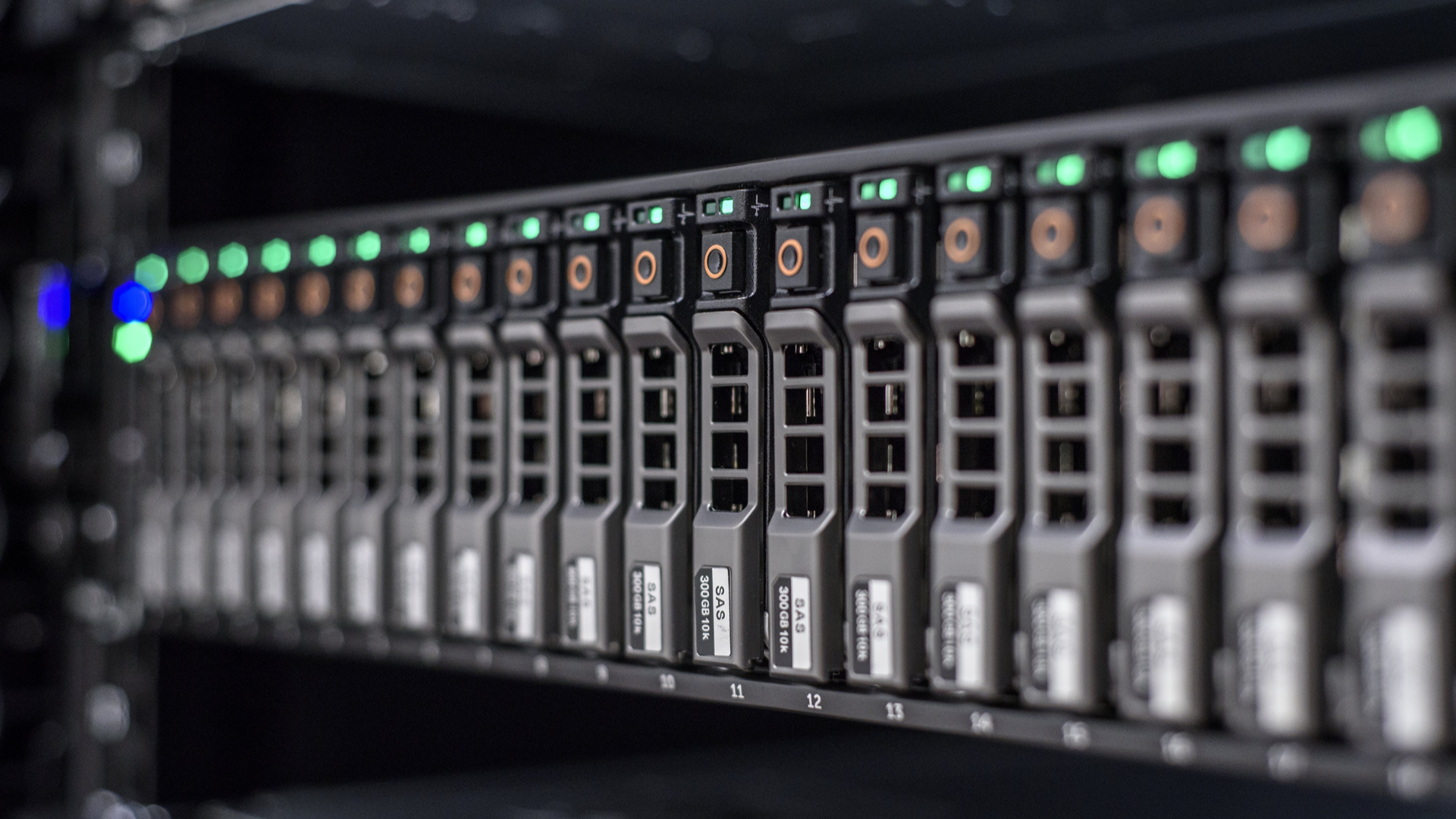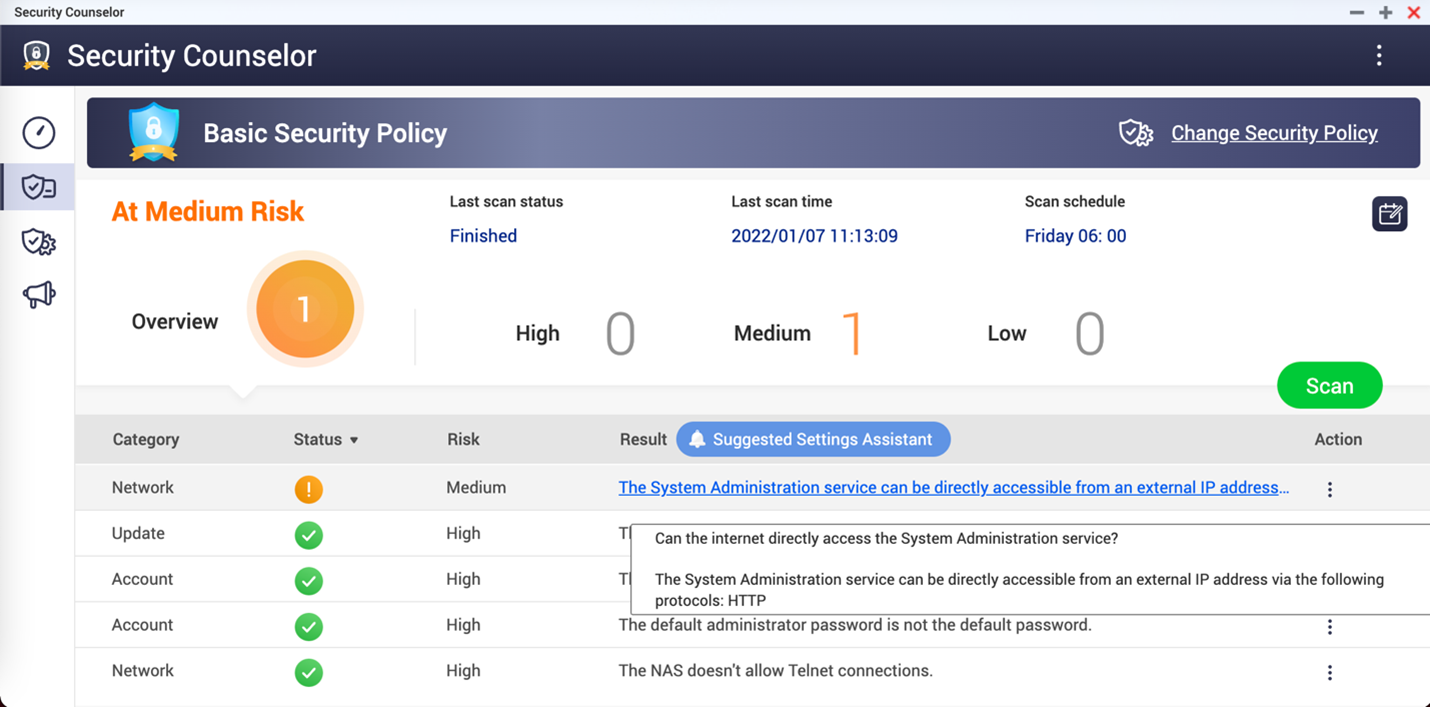QNAP warns of ransomware targeting internet-facing NAS products
The manufacturer has provided a guide to securing vulnerable products amid ongoing attacks


QNAP customers have been advised that cyber attackers are targeting its network-attached storage (NAS) products with ransomware and have been encouraged to secure their devices at the earliest opportunity.
Ransomware and brute-force cyber attacks have been "widely targeting" QNAP's internet-facing NAS products, according to the manufacturer which published a products security statement on Friday.
Best NAS drives 2023: Which network storage appliance is right for you? 12 wonderful uses for a NAS Can you put an SSD in a NAS?
NAS drives that are exposed to the internet without any protection are particularly vulnerable to the attacks and users are advised to revisit their security settings to ensure devices are adequately protected.
The scale of attacks is currently unclear and QNAP also didn't specify what strain of ransomware the attackers are using, or where the attackers are based. IT Pro has contacted QNAP for additional comment.

To check if a NAS drive is vulnerable to the attacks QNAP has observed, users should open the QNAP Security Counselor on their NAS products. The NAS is at high risk if there is an artefact that reads: 'The System Administration service can be directly accessible from an external IP address via the following protocols: HTTP' on the dashboard. QNAP also has a guide for users on how to check which ports on a router are exposed to the internet.
Securing the NAS

The first step to fully protect vulnerable products from the ongoing attacks is to disable the port forwarding function of the router. This can be completed via the management interface of a user's router. Users should check their settings and disable the port forwarding setting of NAS management service port which is set at port 8080 and 433 by default.

Users should finally disable the universal plug and play (UPnP) function of their QNAP NAS product in the QTS menu in myQNAPcloud. To do this, users can navigate to the 'Auto Route Configuration' tab in the QTS menu and unselect 'Enable UPnP Port forwarding'.
Sign up today and you will receive a free copy of our Future Focus 2025 report - the leading guidance on AI, cybersecurity and other IT challenges as per 700+ senior executives

Connor Jones has been at the forefront of global cyber security news coverage for the past few years, breaking developments on major stories such as LockBit’s ransomware attack on Royal Mail International, and many others. He has also made sporadic appearances on the ITPro Podcast discussing topics from home desk setups all the way to hacking systems using prosthetic limbs. He has a master’s degree in Magazine Journalism from the University of Sheffield, and has previously written for the likes of Red Bull Esports and UNILAD tech during his career that started in 2015.
-
 The six biggest security challenges coming in 2026
The six biggest security challenges coming in 2026In-depth What will be the main challenges businesses face in 2026 and what can they do to prepare?
-
 Channel focus: All you need to know about Microsoft's partner program
Channel focus: All you need to know about Microsoft's partner programChannel Focus The veteran OS developer and vendor continues to advance its strategy, particularly in Azure cloud solutions and AI
-
 15-year-old revealed as key player in Scattered LAPSUS$ Hunters
15-year-old revealed as key player in Scattered LAPSUS$ HuntersNews 'Rey' says he's trying to leave Scattered LAPSUS$ Hunters and is prepared to cooperate with law enforcement
-
 The Scattered Lapsus$ Hunters group is targeting Zendesk customers – here’s what you need to know
The Scattered Lapsus$ Hunters group is targeting Zendesk customers – here’s what you need to knowNews The group appears to be infecting support and help-desk personnel with remote access trojans and other forms of malware
-
 Impact of Asahi cyber attack laid bare as company confirms 1.5 million customers exposed
Impact of Asahi cyber attack laid bare as company confirms 1.5 million customers exposedNews No ransom has been paid, said president and group CEO Atsushi Katsuki, and the company is restoring its systems
-
 The US, UK, and Australia just imposed sanctions on a Russian cyber crime group – 'we are exposing their dark networks and going after those responsible'
The US, UK, and Australia just imposed sanctions on a Russian cyber crime group – 'we are exposing their dark networks and going after those responsible'News Media Land offers 'bulletproof' hosting services used for ransomware and DDoS attacks around the world
-
 A notorious ransomware group is spreading fake Microsoft Teams ads to snare victims
A notorious ransomware group is spreading fake Microsoft Teams ads to snare victimsNews The Rhysida ransomware group is leveraging Trusted Signing from Microsoft to lend plausibility to its activities
-
 Volkswagen confirms security ‘incident’ amid ransomware breach claims
Volkswagen confirms security ‘incident’ amid ransomware breach claimsNews Volkswagen has confirmed a security "incident" has occurred, but insists no IT systems have been compromised.
-
 The number of ransomware groups rockets as new, smaller players emerge
The number of ransomware groups rockets as new, smaller players emergeNews The good news is that the number of victims remains steady
-
 Teens arrested over nursery chain Kido hack
Teens arrested over nursery chain Kido hacknews The ransom attack caused widespread shock when the hackers published children's personal data